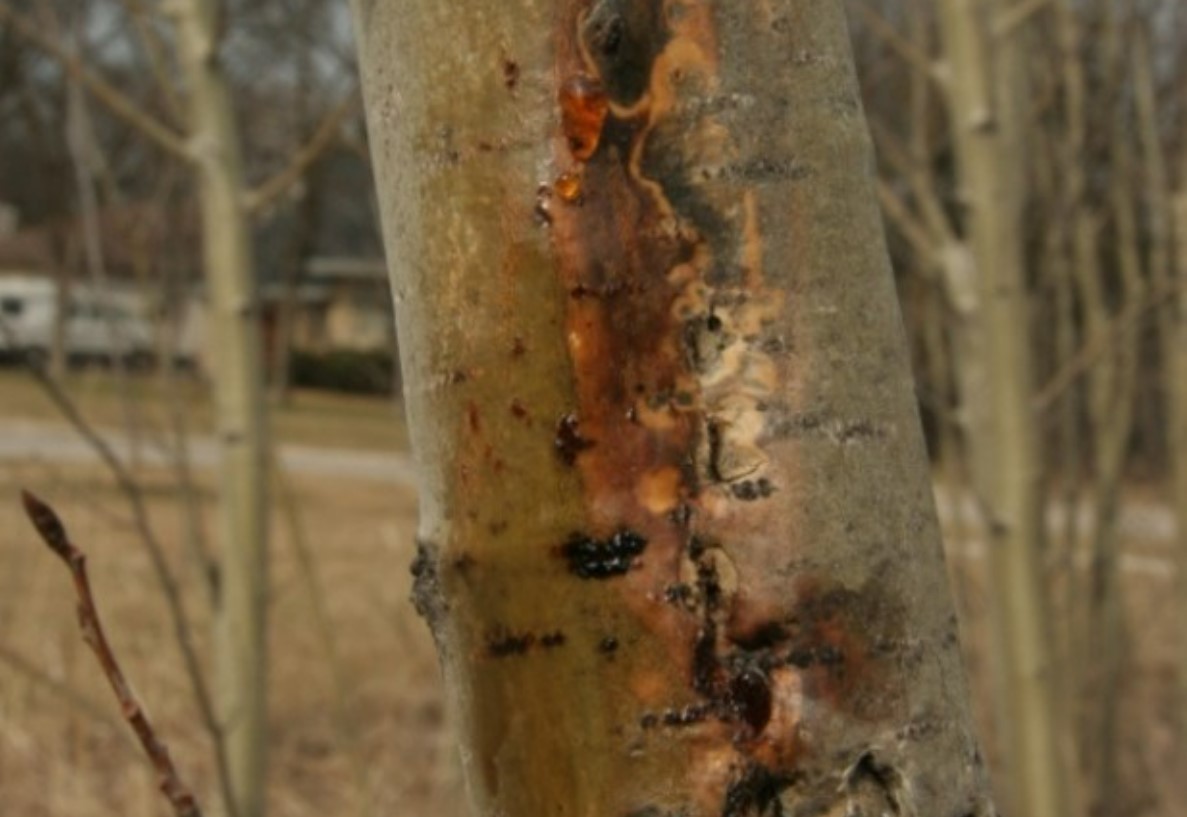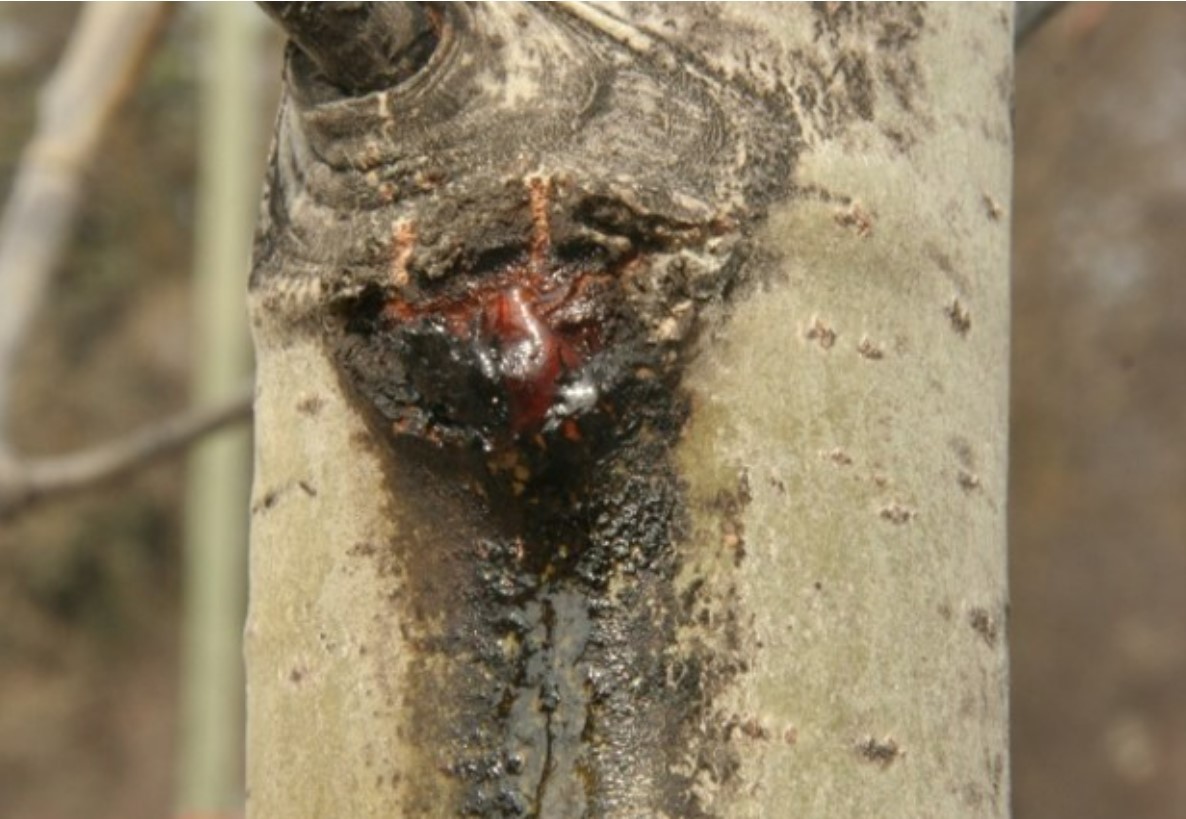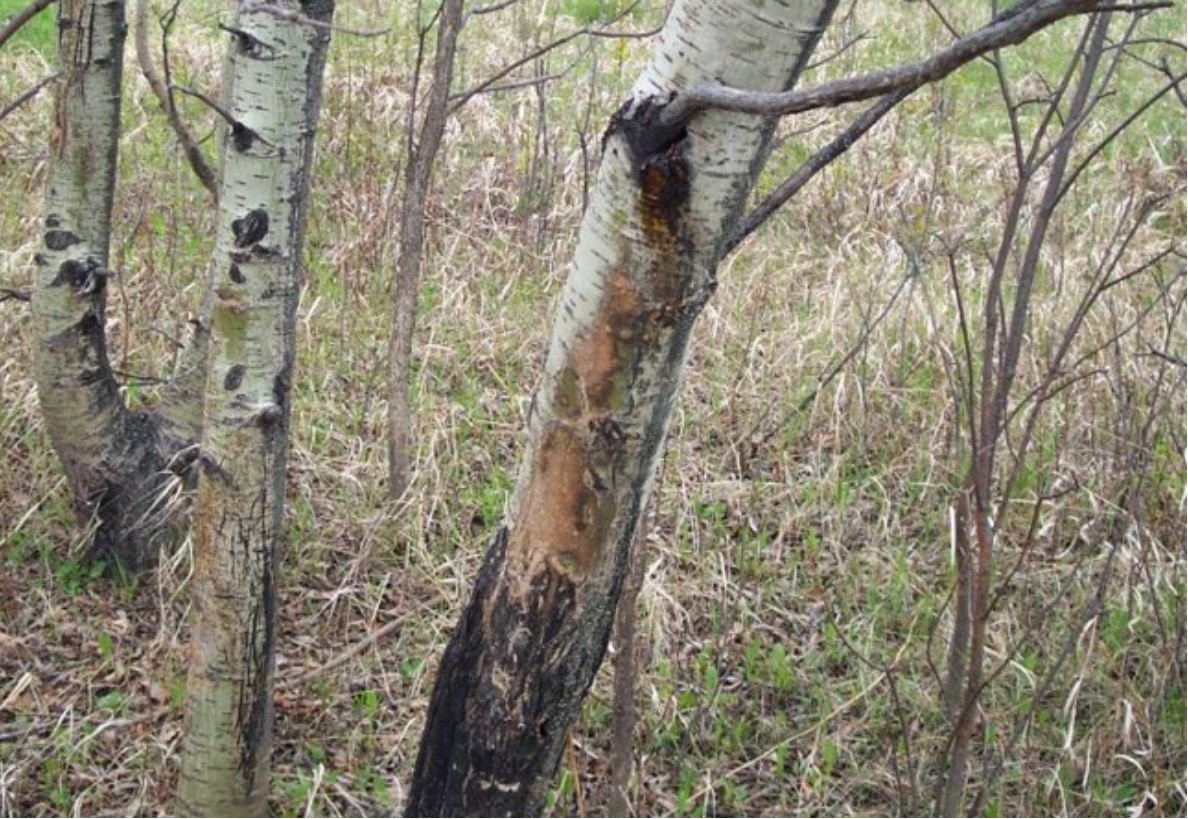Canker disease is a Hypoxylon canker, caused by the fungus Hypoxylon mammatum. It is a disease that affects aspen, poplar, and willow. The fungus causes cankers on branches or stems, which usually appear sunken and/or discolored. Hypoxylon canker is most commonly found on trembling aspen (Populus tremuloides), some hybrid poplars, and some introduced species. Big tooth aspen (Populus grandidentata) is occassionally infected, while balsam poplar (Populus balsamifera) is rarely infected. Native willows appear to be resistant to the fungus, but some introduced species are susceptible.
The means by which this disease is spread is unknown, but it is believed that the fungus enters young stems and branches through wounds.
Sign and Symptoms
The fungus grows beneath the bark, causing a tannish discoloration. Two years after infection, the bark turns dark, blisters, and cracks. Under the bark, small gray pillars are produced. Three or more years after infection, somewhat larger gray to black, hard, raised structures are formed on the older portion of the canker.
Spores produced on these structures are dispersed to wounds where new infections begin.
Prevention
There is no chemical control for Hypoxylon canker.
Watering & Fertilizing
- Your trees can be kept healthy by watering and fertilizing. Click here to learn more about watering.
Control - What you need an arborist to do
Pruning
- Prune off infected/dead/ dying branches and remove them during the dry period. Tools have to be sanitized after each cut.



Tree Health Issues
Wondering about costs?

